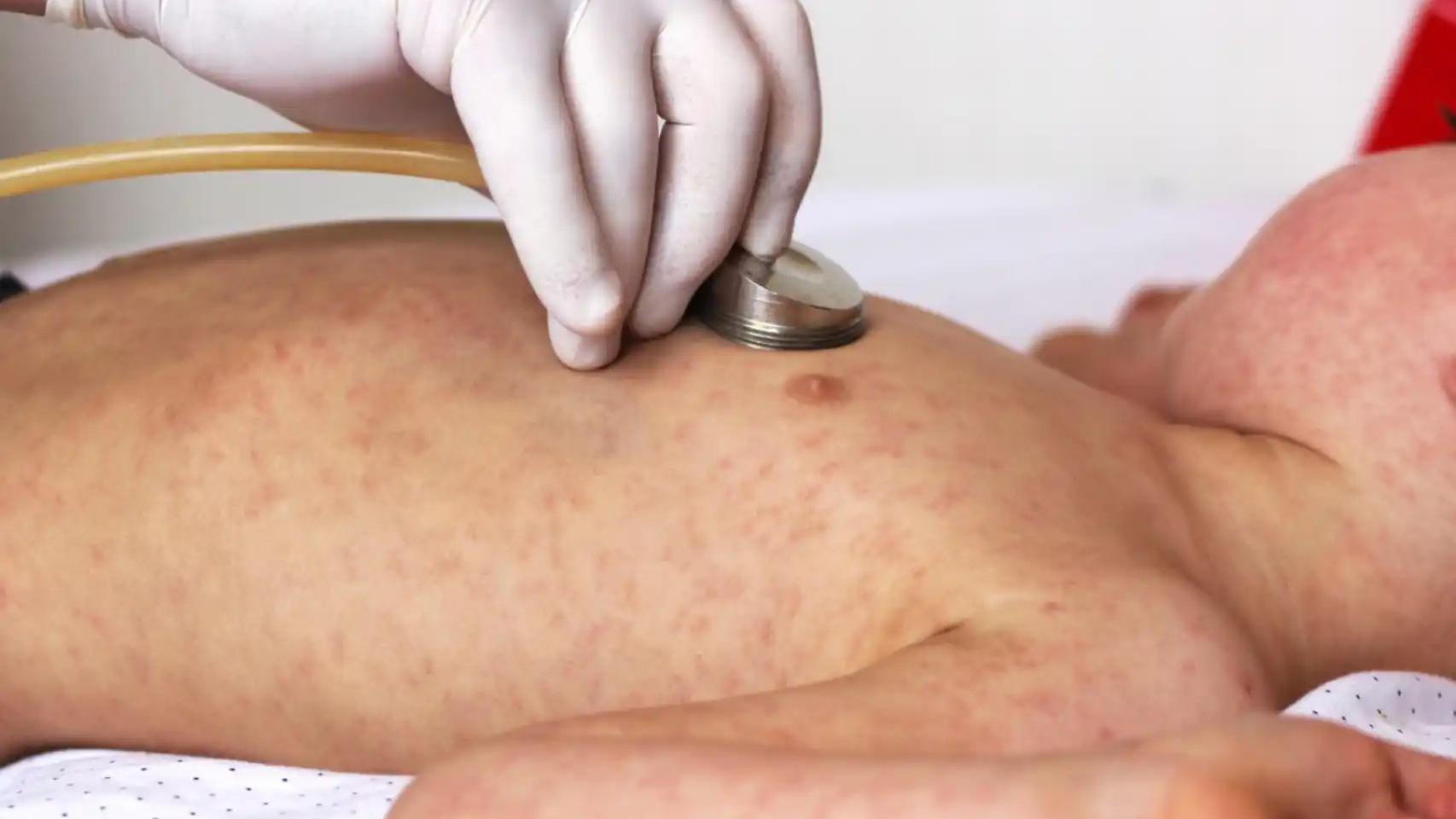Why is measles a threat to Spain despite being one of the European countries with the most vaccinations?

In 2023, Spain reported 11 confirmed measles cases out of more than fifty suspected cases. In 2024, in just a month and a half, the figure was exceeded: 13 confirmed and suspected local transmission for the first time since the pandemic. Experts warn against resting on our laurels: our country has very high vaccination rates, but they are not achieving optimal coverage.
Measles is a highly contagious disease and vaccination coverage must be maintained at very high levels to prevent its spread. The current vaccine is the famous triple virus vaccine because it combines measles, rubella and mumps antigens.
News of rising measles cases has been a big news story over the past few years. The pandemic shutdown has already been overcome and the European Center for Disease Control estimates that it will continue to rise in the coming months due to suboptimal vaccination coverage and that the seasonal peak of the virus will be reached later.
(Vaccinate adults again: a measure to stop measles outbreaks in Europe)
Our country is among the countries with the highest first dose coverage in Europe. With 97% of children covered (it is introduced at 12 months and a second at 3 or 4 years), only Portugal (98%) and Luxembourg (99%) will exceed this figure in 2022, the last year with complete data.
However, Second dose coverage in Spain falls below the 95% threshold. thanks to which the population is considered protected: the famous herd immunity. 93.9% is close to the desired percentage, but this figure hides completely different regional realities.
Although in some communities almost 100% of children are vaccinated with the first dose, Castilla-La Mancha (90.35%), La Rioja (91.09%) and the autonomous city of Melilla (89%) are far from the threshold, while Catalonia It is bordered by the Canary Islands and Castile and Leon.
(From measles to whooping cough: why diseases thought to be under control are returning to Europe)
As for the second dose, eight communities have rates below 95%, and three of them do not even reach 90%: Castilla-La Mancha (88.81%), Basque Country (88.05%) and La Rioja (88). ,1%). Ceuta and Melilla also do not reach it, and in the first of them only 20.86% of children are vaccinated with the second dose.
Given these numbers, the pediatrician Fernando Moraga-Lloprepresentative of the Spanish Association of Vaccinology, believes that “there may be more cases because we do not have optimal vaccination coverage”, which is “inexcusable because we have a safe and effective vaccine: with two doses it is very rare for someone to become infected.”
He is also a pediatrician Antonio Iofriomember of the Vaccine Advisory Committee of the Spanish Association of Pediatrics, hopes that there will not be a serious increase in the number of cases “due to high vaccination coverage, but we must be vigilant and continue to push for vaccines.”
Autochthonous cases of measles
So far, measles cases reported in Spain since the pandemic have been imported. These were people who became infected by traveling to countries with more transmission (or, equivalently, less vaccination) or through contact with people who had traveled from those countries.
However, this year the first radical cases appeared. The Director General of Public Health of the Government of Aragon, Nuria Gayan, explained this week that on February 20 the case was confirmed in A 46-year-old man who “has not traveled to any other area or had contact with people in other areas.”. This therefore means that the measles virus is circulating in Zaragoza.” A country reported two autochthonous outbreaks in the provinces of Toledo and Alicante with 5 and 4 cases, respectively.
These data are not yet included in the epidemiological bulletin, which is prepared weekly by the National Epidemiological Surveillance Network. Therefore, these cases should be added to those already confirmed.
(Will this be the next deadly pandemic: ‘We must be prepared for something worse than Covid’)
Antonio Iofrio reminds that “measles is a serious disease that can have serious complications: from 10% to 30% of cases are complicated.”
Complications are more likely to occur in children under one year of age who are immunocompromised and malnourished, with the most common being bronchitis, pharyngitis and pneumonia (the leading cause of death from measles), as well as others such as ear infections or digestive complications. “The overall mortality rate is between 1 and 3 per 1,000 cases.”
The protocol for each confirmed case is isolation during infection (four days before and four days after the onset of skin rashes characteristic of infection), contact tracing and assessment of their immune status.
Effective, but not perfect vaccine
“In principle, as an epidemiological criterion, it is understood that all people born before 1970 had measles, because in those years the virus was constantly circulating,” comments Fernando Moraga-Llop.
From this date until 1985, children were vaccinated with a single dose and are therefore considered incomplete. Therefore, infections can occur in this population because “If you get two doses of the vaccine, it is very rare for a person to get measles.“.
Very rare, but not impossible. A study of the measles outbreak in Madrid between 2011 and 2012 analyzed 789 collected cases. The vast majority were unvaccinated children, but 29 received one dose and 6 received two.
Overall, Moraga-Llop believes that the risk of the virus spreading in Spain is “small, except in groups of susceptible people, such as the outbreak that occurred a few years ago in a school in Granada, where there were many unvaccinated children.” “
That’s why he warns that we shouldn’t miss the opportunity to control measles. “We have to raise awareness. Diseases will come back if we don’t get vaccinated.”